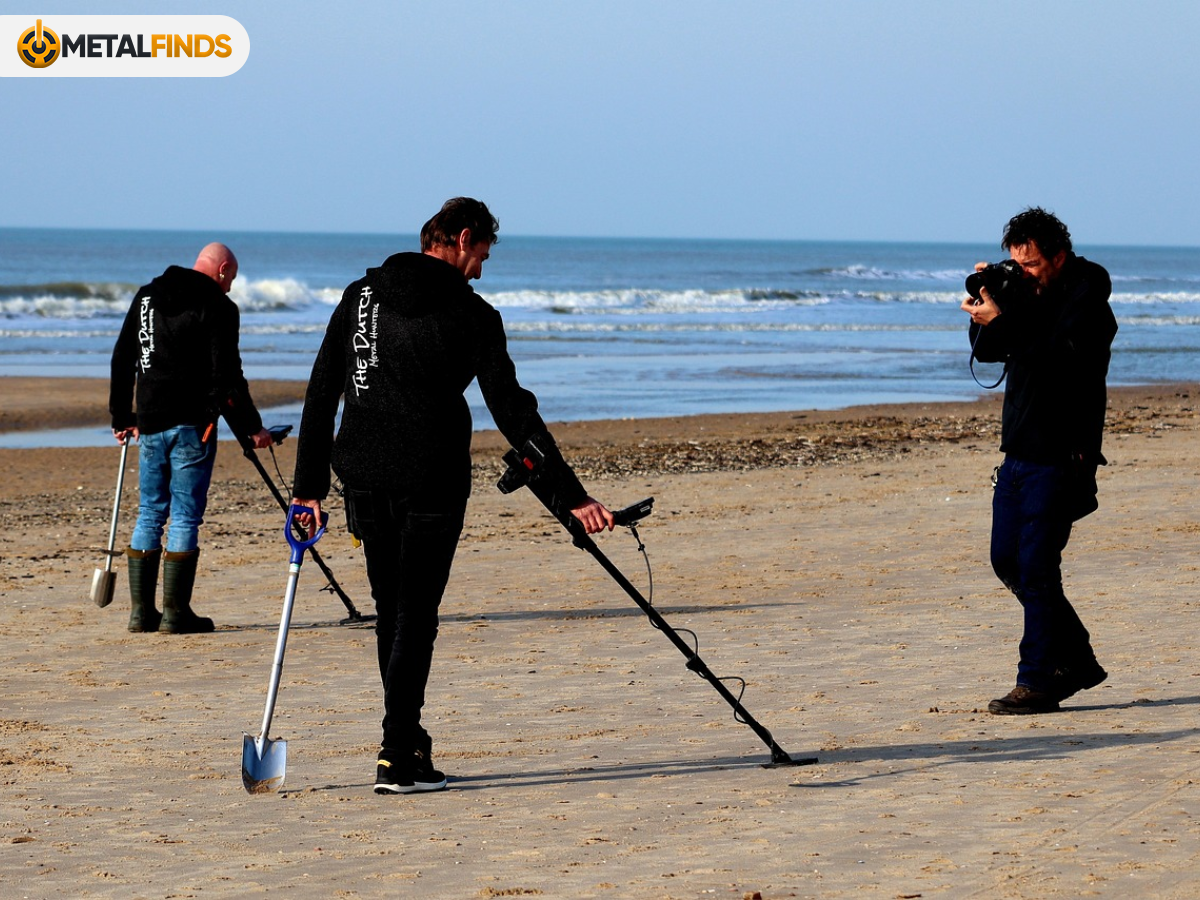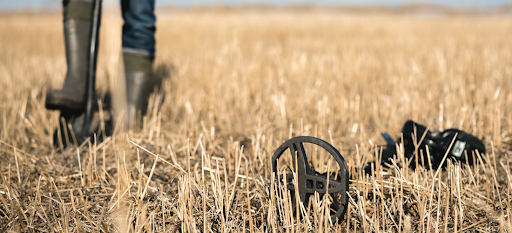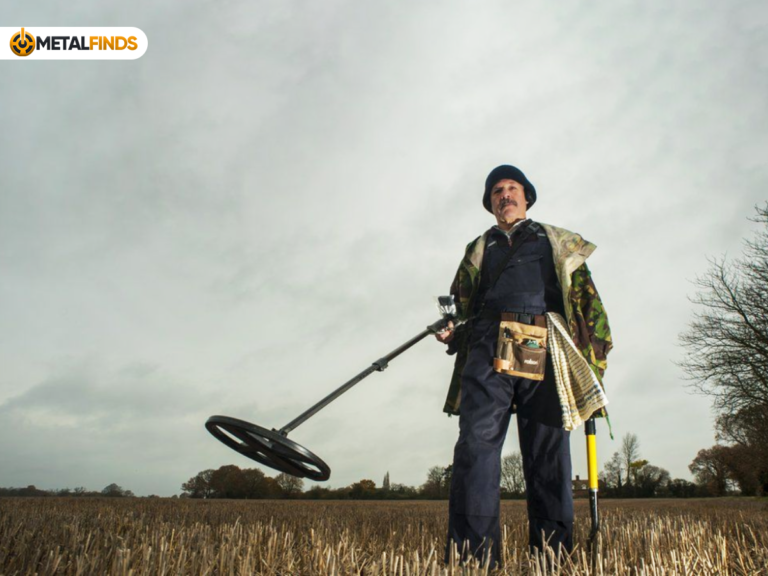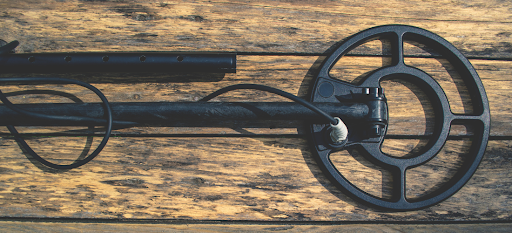How to Use a Metal Detector: A Comprehensive Guide
Finding a new hobby is exciting, but getting yourself geared up for the said hobby is thrilling to the bone. After skimming through several articles and countless YouTube videos, you finally got yourself a metal detector to dive into treasure hunting. But, as if the universe is trying its best to put you in a fix, you have no idea how to use your expensive device.
Don’t be discouraged; we’re here to pull you out of the plight and arm you up for fruitful treasure hunting from the very beginning.
Before dialing into the manual for using metal detectors, let’s first understand the essential components and their role in the detection of targets.
Essential Components of a Metal Detector
A standard metal detector may seem quite simple and straightforward at first glance. However, there is a lot more going on than the eyes can perceive. A metal detector is complex, requiring you to understand several key components and their functionality to control the detecting capabilities of your detector.
Here are a few essential elements of a typical metal detector:

- Shaft
Needless to say, a metal detector contains a shaft that not only provides an anchor for other device components but also allows you to search with several shapes and styles easily. The shaft connects the control box to the coil. Many metal detectors are usually adjustable, making it possible for you to adjust them according to your height.
- Search Coil
The search coil is the farthest part of the metal detector made to hover over the hunting grounds. It contains a sensor that actually detects whenever it catches signals from a metal.
- Signal Processor
As soon as the search coil receives a signal, the signal processor readily processes it to identify the type of metal.
- Control Box
The control box is present along the shaft of the detector and contains all the circuitry, controls, speakers, batteries, and microprocessors.
Besides these, a few additional components can also be used to enhance the efficiency of the detector. Stabilizers can keep the unit steady as you sweep it to and fro along the Ground. Most devices also contain a Jack for connecting headphones. Apart from these, some detectors also have a display unit right above the control box.
How to Use a Metal Detector?
Although all metal detectors have some essential components, their functionality can vary depending on their control box features and settings. All detectors are different, providing you with a new combination of features in each successive model.
To begin with, metal detecting. You first need to educate yourself on its use.
1. Know your Detector’s Settings
Grab the manual and give it a thorough read. Here are a few basic settings to get the most out of your metal detector:
Sensitivity:
The precision of a metal detector to detect a target is based on its sensitivity settings. Higher sensitivity allows for better precision in the area where the target is hidden. However, in places where trash is abundant and your detector won’t stop beeping, lowering the sensitivity can help you identify the good stuff.
Discrimination:
As the term states, discrimination allows you to discriminate between the targets. This setting helps you to discern the metal you want to dig up for. Let’s say you only want to dig up for Gold; set the discrimination mode to Gold and continue your search. This mode works very well when there is a lot of metal lying around.
One thing you must know is that not all metal detectors are apt for gold hunting. The ones like Minelab Gold Monster 1000 or Fisher Labs Gold Bug Pro have specific discrimination features for Gold for you to select and begin the hunt for.
Detection Mode:
Many detectors have several detection modes to make the detection more precise and purposeful. For instance, if you want to search for coins, you can set the detection mode accordingly, and it’ll make a sound for coins.
Ground Balance:
Ground balance is vital to adjust the detector for the mineralization of the soil. It helps you to account for common minerals. If your detector keeps beeping on iron but you find nothing after digging, you can balance out the iron through ground balance so that your device won’t beep for low levels of iron.
Frequency:
Low-frequency detectors running are ideal for larger targets and deeper detections. At the same time, the ones with multi-frequency options up to 40-45kHz allow you to identify even smaller targets much better.
2. Search Meticulously

Sweep the Ground Effectively:
When metal detecting, it is an excellent practice to sweep the detector slowly over a section of Ground in an arc motion. Professionals recommend staying within the distance between the ground and search coil at most 4-6 inches.
As you move forward, keep the detector almost two feet in front of you. To get the best detection results, sweep the device in a back-and-forth motion and maintain a half-circle reach, roughly a foot to each side.
Keep checking the ground you have covered so as not to re-test it when you turn around. The best way to avoid confusion is to walk in a straight line and circle back in the next row.
Remember, The key to detecting is to go ‘slow and low’ without touching the Ground. Sometimes, the search coils can send false signals when touching the Ground. So, keep it up to avoid inconvenience.
Move the detector in a Circular motion after detecting a target:
Once you finally detect a signal or beeping sound, Stop immediately. Now, slowly extend your detector over the area where you hear the beep. Change the discrimination and sensitivity settings if you can to find the precise location of the target. Keep the detector in a circular motion, then move up and down as you have the exact spot of the target.
If your detector has a voice mode to tell apart the type of metal detectors, you can identify the detected metal and judge if you want to dig in or ignore it.
Dig out the Spot:
Metal detectors can give a graphic presentation or numerical value of how deep the targeted object is. Once you have the spot that your device picked up, Cut out the Ground in a circular ‘plug’ around 6 inches in diameter and pull out the whole cylinder of dirt.
This helps keep things less messy and dig effectively.
Use Pinpointer to determine the Target’s Presence:
Pin-pointers can help you determine if the target is still in the ground or if you have pulled it out of the plug. If you don’t have a pinpointer, putting the pulled plug below the metal detector can also help determine the exact location of the metal. If you don’t hear the beeping plug, then you have to dig in deeper.
Gently sift through the plug:
If your detector indicates a metal in the plug, Gently sift through it starting from the bottom to preserve the dirt and roots as much as possible (if you are metal hunting in a park or your backyard).
Re-scan the dug hole:
If you can find one piece of metal, there might be another one buried right below or nearby. So, don’t leave just yet; re-scan the dug hole and the surrounding area for a few minutes. You might find something else.
Replace the plug in the Ground:
Some people leave their metal hunting trails behind by not putting everything back in its place. Don’t be among them; replace the plug to where it belongs, and preserve nature.
Practical Applications of Metal Detectors
Now that you are well-versed in the use of metal detectors. Here are a few activities to test your understanding and bring them into practicality.
- Treasure Hunting
Whether you want to get your hands on the lost Gold on the beach or ancient artifacts buried deep in the forests, the metal detectors will be your trusted companions to uncover the hidden treasure.
- Archaeological Exploration
Archaeologists are professionals using metal detectors for various purposes. They rely on these devices to locate the buried artifacts in the excavation sites. Detectors help them to search for artifacts without disturbing the delicate layers of soil.
- Dive Detecting
The sea holds countless secrets waiting to be discovered by the human race. The scuba hunters are the professionals or hobbyists who have taken their treasure hunting to another level. They dive deep into the sea to find the lost treasure, artifacts, shipwrecks and much more. Waterproof metal detectors like FIsher Labs CZ 21 or Garrett Sea Hunter MK- II can be ideal companions for dive detection.
Sum Up
To sum it up, Metal detecting is a good hobby as long as you know what you are doing. This article explains the basic anatomy of metal detectors, how you can use a metal detector purposefully and what applications you can enjoy it for.
We wish you a very healthy metal hunting!




